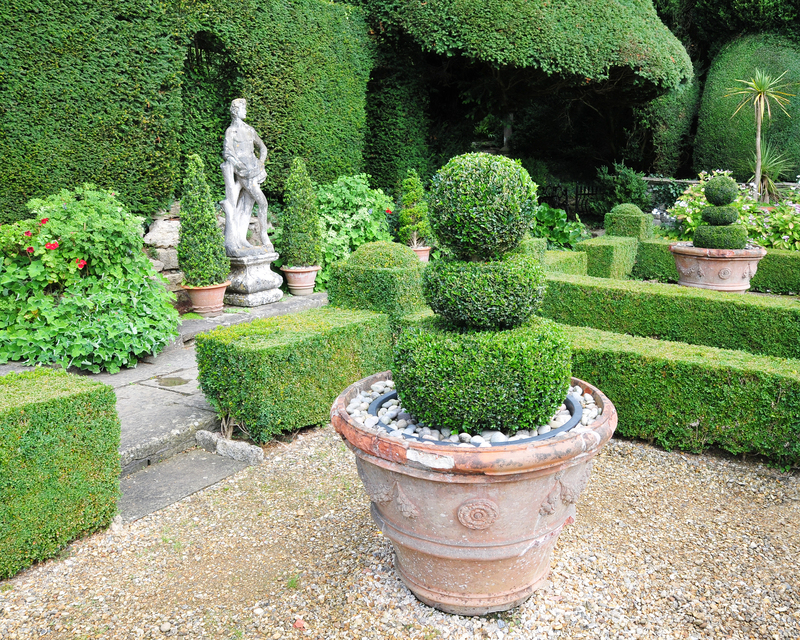Achieve Curb Appeal With the Best Plants for Window Boxes
A charming window box overflowing with vibrant flowers and lush foliage can be the perfect touch to make your home stand out. Not only do well-planted window boxes create a welcome atmosphere for guests, neighbors, and even potential buyers, they also offer a simple, cost-effective way to boost your home's aesthetic without a renovation. If you're looking for the best plants for window boxes to transform your home's curb appeal, this comprehensive guide will help you choose, plant, and maintain a thriving floral display all year round.
Why Window Boxes Are the Secret to Stunning Curb Appeal
Window boxes bridge the gap between the outdoors and the indoors, giving you a small canvas for creativity. Their versatility means you can tailor the look to match your home's architecture, color palette, and even the seasons. Whether you prefer a cottage garden vibe with billowing blooms or a sleek, modern arrangement of structured greens, window box plants offer endless possibilities.
- Instant Color and Texture: Brighten up plain facades with bursts of color, intricate foliage, or cascading vines.
- Increased Home Value: According to realtors, curb appeal can boost property value and create a lasting first impression.
- Seasonal Flexibility: Window boxes allow you to refresh your display for each season, ensuring your home always looks its best.

What to Consider When Choosing Window Box Plants
Before diving into plant picks, consider the essentials for a thriving window box garden:
Sunlight Exposure
Sunlight is the most critical factor in selecting plants for your window boxes. Observe your window's position to determine if it receives full sun, partial shade, or full shade. Full-sun locations get more than 6 hours of direct sunlight, while partial shade gets about 4-6 hours, and full shade receives little or no direct sun.
Watering and Soil Conditions
Window boxes dry out faster than ground-level beds. Opt for potting mixes designed for containers and ensure your window box has proper drainage. Some plants, like succulents, require less frequent watering, while annuals might need daily checks during summer heat.
Climate and Hardiness
If you live in a cold climate, consider hardy perennials or plan to swap out tender annuals each season. In warmer regions, you can enjoy a wider array of tropical plants.
Window Box Size and Depth
Choose plants that won't outgrow your containers. Most window boxes are 6-8 inches deep, so opt for plants with shallow root systems. Mix heights for visual interest--think thriller, filler, and spiller (more on that soon).
How to Design and Plant a Perfect Window Box
Designing your window box is half the fun! The tried-and-true "thriller, filler, spiller" method ensures a well-balanced, eye-catching display:
- Thriller: The tall, central focal point. Examples: Dracaena spike, upright grasses, or salvia.
- Filler: Mid-height plants that fill out the arrangement. Think geraniums, begonias, or impatiens.
- Spiller: Trailing plants that cascade over the edges for a lush look. Examples: Sweet potato vine, ivy, or trailing lobelia.
Plant tip: Don't overcrowd your box. Give each plant room to grow and fill in, and select a color scheme that matches your home's exterior for maximum curb appeal.
Best Plants for Window Boxes by Light Conditions
Best Window Box Plants for Full Sun
If your window box faces the south or west, you'll need sun-loving plants that can handle heat and bright light. Here are some top choices:
- Petunias - Come in a rainbow of colors and bloom prolifically all summer.
- Geraniums - Classic, bold, and easy to maintain, geraniums thrive in sunny spots.
- Calibrachoa (Million Bells) - Great for spillers, these mini-petunia style flowers look lush in mixed arrangements.
- Verbena - Adds trailing color and tolerates drought well.
- Lantana - Known for clusters of tiny flowers and brilliant colors.
- Sweet Alyssum - A sweet-smelling filler with small, white blooms.
- Dusty Miller - Silvery foliage that complements bright flowers as fillers.
Best Window Box Plants for Shade
Shady window boxes require plants that can thrive with little direct light. These selections bring color and texture to dim corners:
- Impatiens - One of the best bloomers for shade, with a wide color palette.
- Begonias - Both tuberous and wax begonias excel in low light.
- Fuchsias - Their drooping flowers are perfect for a romantic look.
- Coleus - Grown for vibrant foliage in a variety of patterns and colors.
- English Ivy - Provides trailing texture for shaded window boxes.
- Heuchera (Coral Bells) - Compact, colorful foliage ideal for partial to full shade.
- Japanese Forest Grass (Hakonechloa) - For a grassy, airy filler.
Best Plants for Partial Sun or Dappled Shade
If your window boxes get several hours of morning sun or filtered light through tree branches, these versatile winners can adapt and thrive:
- Lobelia - Blue, purple, or white trailing blooms that handle cool weather well.
- Violas and Pansies - Early bloomers with cheerful faces, great for spring and fall displays.
- Snapdragons - Adds height and drama, best in cooler parts of the year.
- Polka Dot Plant (Hypoestes) - Adds a pop of patterned foliage.
- Caladium - Striking heart-shaped leaves in pink, red, and white.
Year-Round Curb Appeal: Seasonal Window Box Ideas
Spring Window Box Inspiration
- Tulips, daffodils, hyacinths: Plant bulbs in fall for dramatic spring color.
- Pansies, violas, primroses: Cold-tolerant annuals that enliven early spring boxes.
- Trailing ivy or vinca: Adds trailing greenery that complements spring bloomers.
Summer Window Box Designs
- Bold geraniums and petunias paired with airy sweet alyssum or trailing verbena for a classic summer vibe.
- Calibrachoa and sweet potato vine for a vibrant, cascading effect.
- Tropical touches like canna lilies or cordyline for unique texture and drama.
Autumn Window Box Arrangement
- Mums, asters, ornamental kale, and heuchera add deep, rich colors and thrive in cooler temperatures.
- Mini pumpkins, ornamental peppers and gourds for a festive fall display.
Winter Window Box Wonders
- Evergreens such as dwarf spruce, wintergreen boxwood or juniper offer year-round color and structure.
- Holly, winterberry and pine cones paired with twigs or birch branches for natural holiday decor.
- Pansies and violas remain cheerful in milder climates throughout the winter.
Best Foliage Plants for Window Boxes
Want a lush, green look that transcends flower power? Incorporate these foliage all-stars into your window box designs for stunning texture and year-long interest:
- Sweet Potato Vine (Ipomoea batatas): Striking chartreuse or dark purple leaves that trail beautifully.
- Coleus: Unmatched for variegated, colorful foliage.
- Dusty Miller: Silvery leaves pair well with nearly any colorway.
- Ornamental Grasses: Like blue fescue or carex bring movement and vertical structure.
- Caladium: For bold, heart-shaped leaves with stunning colors.
- English Ivy: Classic trailing greenery that's both hardy and shade-tolerant.
Tips for Keeping Your Window Box Looking Fresh All Season
Water Wisely
Consistent moisture is key to thriving window boxes. Plan on daily watering during hot spells. Consider self-watering window boxes or add water-retaining crystals to your soil mix.
Feed Regularly
Plants in window boxes use up limited nutrients fast. Fertilize every 2-3 weeks with a liquid, balanced fertilizer for robust growth and continuous blooming.
Deadhead, Prune, and Replace
Remove spent blooms to extend flowering, pinch back leggy growth, and replace any plants that start to flag. This keeps your curb appeal looking fresh, neat, and inviting.
Weather Watch
Monitor forecasts and move boxes or protect plants from extreme wind, heavy rain, or late frosts, especially in early spring and late fall.

Frequently Asked Questions About Window Box Plants
What is the best material for window boxes?
Wood is classic but may rot over time, while metal and fiberglass offer durability and a modern touch. Plastic window boxes are budget-friendly, lightweight, and retain moisture well.
How do I prevent window box plants from drying out?
Use a high-quality potting mix and consider adding mulch or water-storing crystals. Self-watering planters are a great investment in hot climates.
Can I grow herbs and edibles in window boxes?
Absolutely! Herbs like basil, parsley, thyme, and chives grow well in sunny window boxes. Add lettuce or small peppers for an edible window garden.
How do I keep plants looking good in the heat of summer?
Choose drought-tolerant varieties such as succulents, lantana, verbena, and dusty miller. Ensure daily watering and add mulch or shade in extreme heat.
Curate Your Own Curb Appeal With the Best Plants for Window Boxes
Window boxes are a beautiful extension of your home's character--a little burst of nature for everyone to enjoy. Whether your goal is to attract pollinators, grow edibles, or simply enjoy a seasonal color show, the best plants for window boxes will transform your home's appearance from the street.
Remember:
- Assess your window's sunlight and climate before choosing plants.
- Mix and match thrillers, fillers, and spillers for dynamic arrangements.
- Experiment with color palettes to create harmony with your home's exterior.
- Be consistent with watering, feeding, and maintenance for all-season beauty.
Ready to boost your curb appeal? Take inspiration from this guide, select your favorite window box plants, and enjoy compliments on your thriving, picture-perfect display all year long!
For an instant home transformation and undeniable curb attraction, there's nothing quite as effective and rewarding as the right mix of plants in your window boxes.